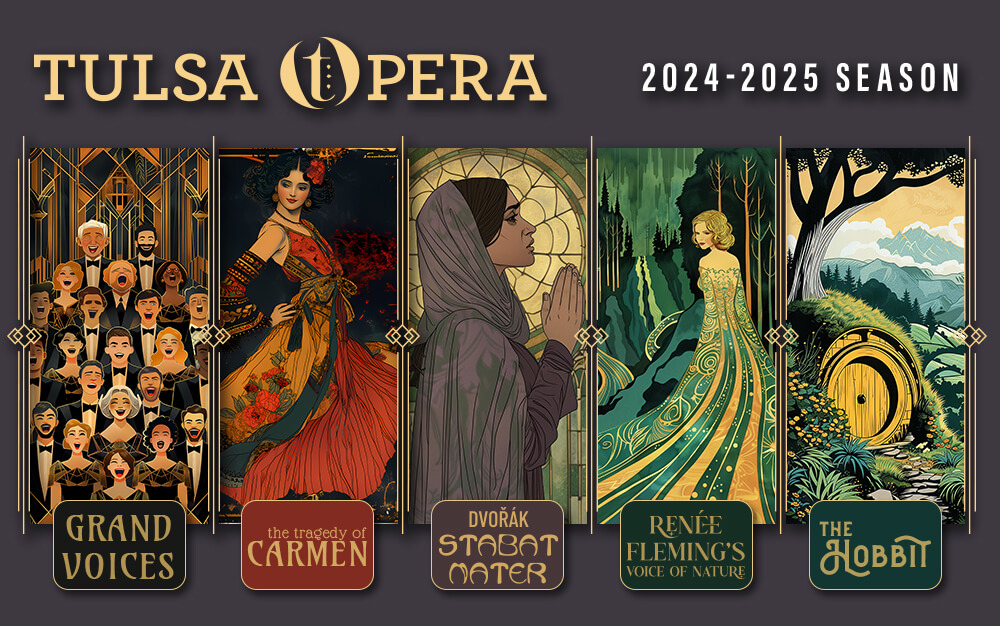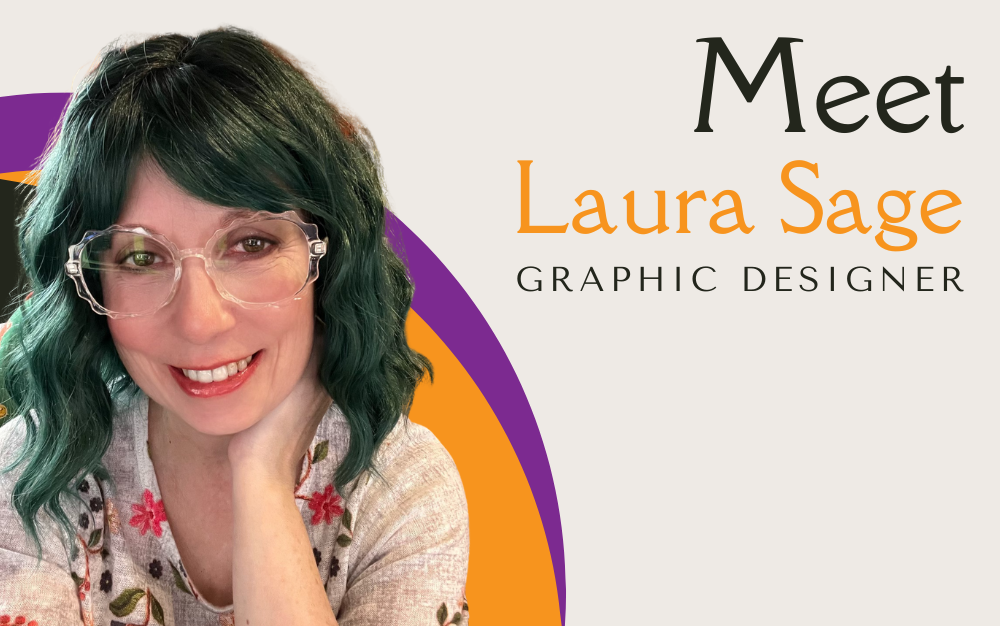Graphic designer Laura Sage is the artist responsible for Tulsa Opera’s popularly acclaimed 2024-25 Art Deco-style season artwork. With over 30 years of design experience and a rich background in opera, she brings a unique blend of expertise to her work and continues to push the boundaries of creativity through her work with Artificial Intelligence (AI) tools. Tulsa Opera sat down with Laura to learn more about her journey, her approach to creating the stunning visuals for this season, and her thoughts on the intersection of art and technology.
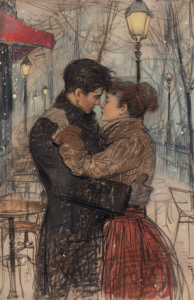
Artwork by Laura Sage
Tulsa Opera: Can you walk us through your creative process for designing the artwork for Tulsa Opera’s 2024-25 season? How do you begin and develop your ideas?
Laura Sage: Ah, the creative process. It usually starts with a strong cup of coffee and some serious procrastination. For Tulsa Opera’s 2024-25 season, I began with the events themselves — each has its unique vibe and story, whether it’s a concert with the Tulsa Opera Chorus, a unique version of Carmen, Dvorák’s Stabat Mater, an evening with Renée Fleming, or a children’s opera of The Hobbit. I let those guide my initial brainstorming. I toyed with different themes, colors, and styles until something clicked. Then, I whipped out MidJourney (an Artificial Intelligence tool for generating visual art – Ed.) and, of course, roped in my good pal, ChatGPT (an AI language model for generating text and ideas – Ed.) to brainstorm and get some initial ideas down. From there, I took the AI-generated concepts and spent countless hours tweaking and refining them in Photoshop. It’s like having a digital assistant that helps with the heavy lifting, but I’m still the one doing all the meticulous edits and final touches.
TO: How has your background with opera and classical performance influenced your approach to this project? Do you have any personal connections to the operas featured this season that guided your designs?
LS: Let’s just say I’ve been around the opera block a few times. Having worked with various performing arts organizations over the years, I’ve developed an ear (and an eye) for what resonates with opera lovers. I’ve run two opera companies myself—Lyric Opera of Los Angeles (LOLA) and Scenic City Opera—both specializing in lesser-known operatic works. I’ve also been a professional violinist my entire life and an opera singer as well. My entire family is classically trained in one or more instruments. This deep immersion in the arts absolutely influences my designs, making them richer and more nuanced. Personal connections? Absolutely. I mean, who doesn’t feel a pang of nostalgia with Carmen or get swept away by Dvorák’s Stabat Mater? These emotional ties definitely influenced my designs.
TO: What were your main sources of inspiration for this season’s artwork and how did you incorporate elements of Tulsa Opera’s history and branding? Are there specific themes or elements from the operas that you wanted to highlight?
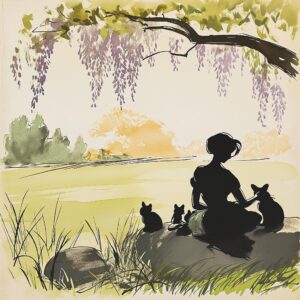
Artwork by Laura Sage
LS: Inspiration is everywhere—sometimes it’s in a vintage opera poster, other times it’s in the bottom of a wine glass. For this project, I collaborated closely with Cindy Sadler, Tulsa Opera’s Director of Marketing and Communications. She tasked me with creating artwork that reflected the art deco and art nouveau elements that Tulsa is famous for. We pulled out elements of the city’s landmarks and married those with the events’ themes. We wanted to depict the unique characteristics of each production within the culture of Tulsa itself. Each piece needed to capture the essence of its event, balancing tradition and innovation.
TO: How do you blend your 30-year experience in graphic design with new technologies like AI and standard tools like Photoshop? Can you share specific examples of how AI-generated concepts were refined and edited in Photoshop to create the final designs for this season’s artwork?
LS: Blending old and new is where the magic happens. I’ve been doing this for nearly three decades, so I’ve seen a lot of tools come and go. AI, like MidJourney, is just the latest addition to my toolkit. It helps generate ideas quickly, but those ideas are just the starting point. In addition to giving me a “rough composition,” the AI provides bits and pieces in the many generations I run, and I can take elements and combine them into a new, cohesive whole. For instance, the final artwork for The Tragedy of Carmen has elements from about a dozen different images, plus hundreds of further refinements, and hours of work to finish it up so it’s something that can be used in all the different contexts of an advertising campaign. It’s like having an apprentice who does the rough sketches, and then I come in to make it a masterpiece.
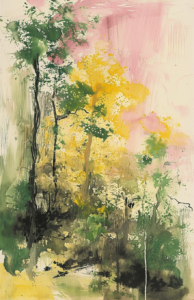
Artwork by Laura Sage
TO: AI can be controversial and many people don’t have a good understanding of what it is and what it does. What would you like people to know about the use of AI in creating art? How do you ensure your use is ethical?
LS: AI is like a hammer—it’s a tool, not the artist. It doesn’t steal jobs; it creates new opportunities and streamlines workflows. An art student goes to museums, learns art from various teachers, and is told to emulate the artists they love over and over until they begin to create their own style. In basic concept, this is what AI has done—but on a much grander and faster scale. Ethical use means transparency and giving credit where it’s due. I always ensure that the final piece is a product of extensive human touch and creativity. AI might generate the bones, but it’s my hand that puts flesh on them.
TO: What have been the most challenging and rewarding aspects of creating the artwork for this season? Is there a particular piece or design element you’re especially proud of? What challenges have you encountered in integrating new technologies like AI into your work, and how have you addressed them?
LS: The biggest challenge? Probably trying to explain to my seven cats and four dogs why I’m working at 3 AM. Joking aside, the challenge lies in integrating AI without losing the human touch. The most rewarding part is seeing everything come together beautifully. I’m particularly proud of The Tragedy of Carmen piece—it captures the fiery spirit of the opera perfectly. Integrating AI has its hurdles, mainly the initial skepticism and the learning curve. But once you get past that, it’s like discovering a new color to paint with. Addressing these challenges involves staying open-minded, constantly learning, and never letting the machine take over the artist’s soul.
—–
Opera singer, violinist, web developer, graphic designer, and master multitasker, Laura Sage has starred in obscure operas, founded two opera companies (because one wasn’t crazy enough), and juggles a career in web development & design while freelancing for nonprofits and artists. Her household is a zoo with a parade of dogs and cats, and she spends her free time painting everything in sight (including upholstered furniture) and trying to clean up after her menagerie. An ADHD-addled, middle-aged, single mom residing in Chattanooga, TN, Laura lives for Dr. Pepper & Little Debbie Snack Cakes, loathes water and the gym, and yet is perpetually perplexed by her mysterious menopausal weight gain. Despite the chaos, she remains a Renaissance woman with a sharp wit and a healthy (ok, maybe more than healthy) dose of sarcasm thrown in for good measure.
—–
Editor’s Note: Official 2024-205 Tulsa Opera merchandise featuring Laura’s artwork will be available soon. It will be announced via social media, the Tulsa Opera website, and this blog.
